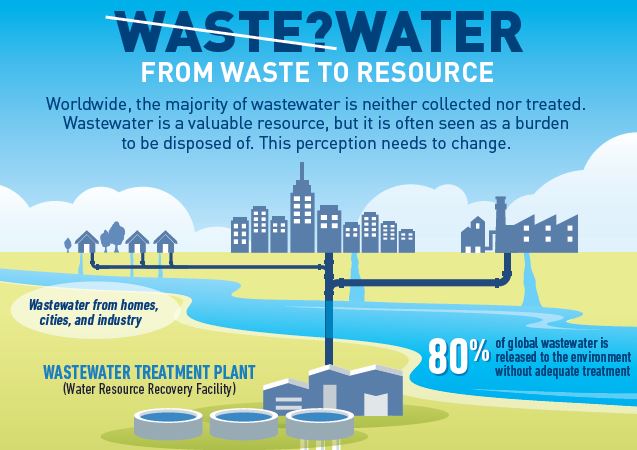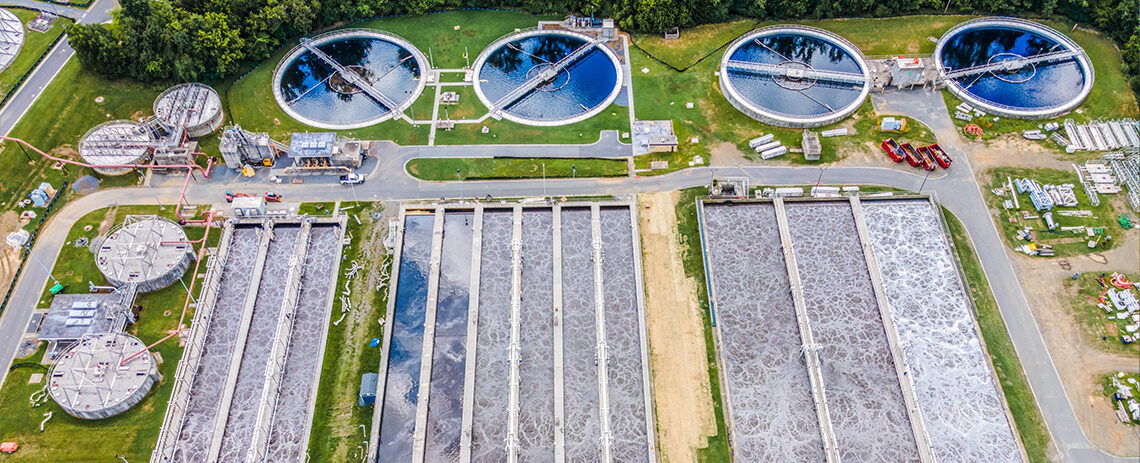Expert Guidance on Designing Custom Wastewater Management Plans
Wiki Article
Comprehending Wastewater Therapy Processes and Their Environmental Influence
The complexities of wastewater treatment procedures play a crucial role in mitigating ecological difficulties linked with water contamination. Each stage, from preliminary to sophisticated treatments, is designed to resolve specific pollutants, eventually securing both public health and wellness and marine ecosystems. In spite of technical advancements in treatment performance, substantial difficulties continue, including the management of residual toxins and the ramifications of nutrient runoff. As we discover the intricacies of these processes, it ends up being important to question how far current methods can evolve to fulfill the growing needs of sustainability and environmental conservation.Overview of Wastewater Treatment
Just how is wastewater transformed right into a risk-free resource for the environment? Wastewater therapy is a vital procedure developed to remove impurities from used water, consequently safeguarding public wellness and shielding environments. This process starts with the collection of wastewater from residential, industrial, and industrial sources, which is after that directed to treatment centers.At these centers, various physical, chemical, and organic techniques are used to treat the wastewater. Initial screening removes big debris, adhered to by sedimentation to separate heavier solids. Subsequently, organic therapies, such as triggered sludge procedures, utilize microorganisms to damage down organic issue. These approaches not just decrease toxin levels but additionally facilitate the healing of important nutrients.
The dealt with effluent can be securely released into natural water bodies or recycled for irrigation and industrial functions, advertising resource preservation. Additionally, the treatment procedure generates biosolids, which can be repurposed as plant foods or dirt changes, even more enhancing sustainability.
Phases of Treatment Procedures
The wastewater therapy process commonly includes 3 key phases: initial, primary, and second treatment. Each stage offers an unique duty in lowering the pollutant tons and ensuring the effluent meets environmental standards before discharge.The primary treatment stage concentrates on the physical splitting up of suspended solids from the wastewater. Via sedimentation, heavier fragments clear up at the end of sedimentation storage tanks, forming sludge, while lighter products, such as oils and oils, float to the surface and are skimmed off. This process substantially reduces the natural and inorganic load in the wastewater.
Second treatment is a biological process intended at more decreasing the concentration of organic matter. This phase is vital for accomplishing the essential biochemical oxygen need (BODY) reduction, eventually leading to cleaner effluent all set for discharge or additional treatment.

Advanced Therapy Technologies
Following the secondary therapy processes, progressed therapy innovations play an essential duty in more improving the top quality of dealt with wastewater. These modern technologies are developed to remove recurring impurities that are not properly gotten rid of throughout primary and second treatments, making sure the effluent fulfills rigid regulative requirements.Amongst the commonly made use of innovative therapy techniques are membrane purification, reverse osmosis, and progressed oxidation processes. Membrane layer purification, consisting of microfiltration and ultrafiltration, is efficient in separating great fragments, microorganisms, and colloids from the water (Wastewater). Reverse osmosis utilizes semi-permeable membrane layers to remove liquified solids, resulting in premium water suitable for different applications
Advanced oxidation processes (AOPs) use strong oxidants to break down natural pollutants, consisting of pharmaceuticals and personal care items that are immune to standard treatment. These methods improve the biodegradability of complicated compounds, facilitating their elimination.
An additional considerable innovation is using organic nutrient removal processes, which particularly target nitrogen and phosphorus, stopping eutrophication in obtaining water bodies. On the whole, sophisticated therapy technologies are essential for accomplishing higher levels of purification, promoting water reuse, and protecting public health and wellness while resolving the obstacles connected with wastewater management.
Ecological Advantages of Therapy
Many environmental advantages occur from effective wastewater treatment procedures that add to ecosystem health and sustainability. Mainly, these procedures significantly reduce the release of dangerous pollutants right into all-natural water bodies, which aids maintain aquatic environments. By getting rid of contaminants such as hefty metals, nutrients, and virus, dealt with wastewater mitigates the risk of waterborne illness and promotes biodiversity in aquatic environments.In addition, wastewater therapy facilities often employ advanced technologies that make it possible for water recycling and reuse. This technique not just saves fresh water sources but additionally lowers the demand on natural water materials. Boosted nutrient removal from wastewater can likewise protect against eutrophication, a process that leads to algal blooms and subsequent oxygen deficiency in water systems.
Additionally, reliable therapy processes can lessen greenhouse gas discharges, specifically methane and laughing gas, which are commonly released during neglected wastewater decomposition. By capturing and making use of biogas from anaerobic digesters, facilities can transform waste into renewable resource, thus contributing to a reduction in nonrenewable fuel source dependence.
Challenges and Future Trends
While the environmental advantages of wastewater treatment are clear, several difficulties persist that prevent ideal results in this area. visit site One major concern is aging facilities, which typically leads to ineffectiveness and raised operational costs - Wastewater. Lots of treatment plants were developed years ago, and their capacities do not line up with modern-day demands, which include more stringent regulatory criteria and greater quantities of wastewater as a result of urbanization
Looking ahead, there is an expanding focus on resource recovery and round economic situation principles within wastewater additional hints therapy. Advancements such as anaerobic food digestion, which can generate biogas, and progressed purification technologies are obtaining grip. These approaches not just enhance therapy effectiveness yet additionally promote sustainability.
Eventually, attending to these difficulties requires cooperation amongst stakeholders, investment in innovation, and a dedication to continuous research study. By accepting these fads, the wastewater therapy industry can evolve to meet the needs of a changing atmosphere and culture.
Verdict
In conclusion, wastewater treatment procedures play an essential duty in boosting environmental top quality and public wellness. The multi-stage treatment structure, coupled with innovative innovations, successfully minimizes air pollution and promotes sustainable water management. By attending to recurring pollutants and reducing vitamins and mineral drainage, these procedures contribute to the preservation of water ecological communities and the decrease of greenhouse gas discharges. Proceeded improvements and adaptations in treatment methods will be necessary for getting rid of emerging look what i found difficulties and guaranteeing the sustainability of natural deposits (Wastewater).Report this wiki page